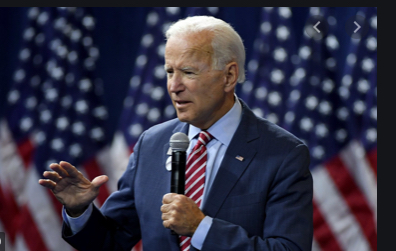
By Geoffrey A. Lindley
With but a signature from the President’s pen, the $1.9 trillion economic relief package entitled the American Rescue Plan Act of 2021 (ARP) became law. However, as the President noted, enacting such sweeping legislation and actually putting it into effect are two different things entirely. The 240 plus page bill contains significant legal changes that affect much of the American way of life, including the relationship between employers and their employees. This article will outline a few important parts of ARP relevant to employers.
FFCRA Tax Credit Extension
Last year Congress passed the Families First Coronavirus Response Act (FFCRA), which took effect April 1, 2020, and provided federally mandated paid leave subsidized through payroll tax credits to employers. The FFCRA, contained two key provisions: (1) the Emergency Paid Sick Leave Act (EPSLA) and (2) the Emergency Family and Medical Leave Expansion Act (EFMLEA). Both provisions applied to private employers who have fewer than 500 employees and to public employers. However, public employers were not entitled to the payroll tax credit. The provisions of the FFCRA expired on December 31, 2020.
The Consolidated Appropriations Act (CAA), signed by President Trump on December 27, 2020, allowed employers to voluntarily extend the FFCRA paid leave provisions for employees who had not yet used all of their leave through March 31, 2021, and still receive the payroll tax credits. However, ARP made further changes.
EPSLA
The EPSLA provided up to 80 hours of paid sick leave to all employees who were unable to work in the traditional sense or work remotely because of a need for leave under the following circumstances:
- the employee was subject to a government quarantine or isolation order related to COVID-19;
- the employee was advised by a health care provider to self-quarantine because of COVID-19 concerns;
- the employee was experiencing symptoms of COVID-19 and sought a medical diagnosis;
- the employee was caring for an individual subject to a government quarantine or isolation order related to COVID-19 or was advised by a health care provider to self-quarantine because of COVID–19;
- the employee was caring for the employee’s child whose school or place of care was closed or whose child care provider was unavailable because of COVID-19; or
- the employee was experiencing any other substantially similar condition specified by the Secretary of Health and Human Services in consultation with the Secretary of the Treasury and the Secretary of Labor.
For leave related to reasons (1), (2), and (3) above, an employee received full pay capped at $511 per day, but for leave related to reasons (4), (5), and (6), an employee received 2/3 pay capped at $200 per day.
ARP allows employers to again voluntarily extend FFCRA paid sick leave and receive tax credits but with the following changes.
- As of April 1, 2021, employers must replenish their employees’ paid sick leave balance by providing an additional 10 days of leave. The tax credit is limited to the value of 80 hours of wages.
- The leave applies to the original 6 FFCRA reasons but also allows for tax credits for the additional reasons: (1) the employee is awaiting test results or is seeking a medical diagnosis regarding COVID–19 and such employee has been exposed to COVID–19 or the employee’s employer has requested such test or diagnosis; (2) the employee is obtaining a COVID-19 vaccination; (3) or the employee is recovering from any injury, disability, illness, or condition related to the vaccination. Leave for these reasons is at full pay.
EFMLEA
This leave applied to employees unable to work in the traditional sense or remotely because they had a child whose school was closed or a childcare provider was unavailable because of COVID-19 and provided for up to 10 weeks of paid leave at 2/3 of the employee’s regular pay with a maximum total payment of $10,000. However, ARP allows employers to claim tax credits for EFMLEA leave for any of the qualifying reasons in the FFCRA, including the three new reasons for paid sick leave noted above. Additionally, the leave is increased to 12 weeks at 2/3 pay with a $12,000 cap. ARP is not clear but, absent DOL guidance, the better interpretation appears to be that this leave runs concurrent with classic FMLA leave.
The FFCRA extended tax credits under ARP apply to leave from April 1, 2021, through September 30, 2021, and also apply to government employers, not including the federal government. Employers who discriminate with regard to this leave in favor of highly compensated employees, in favor of full-time employees, or based on employment tenure do not qualify for the tax credits. Lastly, ARP does not explicitly prohibit an employer from choosing to extend just one of these paid leave options.
Unemployment Benefits
From the CARES Act to the CAA and now ARP, the United States government has subsidized increased unemployment benefits.
Pandemic Unemployment Compensation (PUC)
PUC allowed qualified applicants awarded unemployment insurance benefits by their state to receive their regular state weekly unemployment benefits plus an additional $600/week through July 31, 2020. The CAA provided $300/week in addition to normal unemployment benefits from December 27, 2020, through March 14, 2021, and ARP extends this amount through September 6, 2021.
Pandemic Emergency Unemployment Compensation (PEUC)
PEUC provided for qualified persons actively seeking work to receive an additional 13 weeks of unemployment benefits beyond the normal limit set by the states up to a cap of 39 weeks. This program ran through December 31, 2020. However, the CAA extended PEUC through March 14, 2021, and increased the limit to 50 weeks. ARP further extends the program through September 6, 2021, and increases the limit to 79 weeks.
Pandemic Unemployment Assistance (PUA)
PUA provided up to 39 weeks of unemployment benefits to those who could not work for COVID-related reasons and were otherwise ineligible for regular unemployment compensation or extended benefits under state/federal law or PEUC. PUA was to end on December 31, 2020, but the CAA extended the program through March 14, 2021, and capped benefits at 50 weeks. ARP further extends the program through September 6, 2021, and increases the cap to 79 weeks.
COBRA Premium Subsidies
The Consolidated Omnibus Budget Reconciliation Act of 1985 (COBRA) provides the opportunity for a covered employee to elect continuing health insurance coverage through his or her employer if a qualifying event occurs such as termination of employment for reasons other than gross misconduct or a reduction in hours. Normally, employees must pay for COBRA coverage up to 102% of the cost to the plan.
ARP now provides a 100% COBRA premium subsidy from April 1, 2021, through September 30, 2021, for employees who have experienced a reduction in hours or an involuntary termination and their covered relatives who elect COBRA continuation coverage. Employees eligible for other group coverage such as a spouse’s plan or for Medicare do not qualify. Employers must provide the subsidy to assistance eligible individuals (AEI) who have elected COBRA, and employers are then eligible for a tax credit against their Medicare payroll taxes.
Additionally, employers are required to provide the following notices under ARP for which the DOL has prepared model forms:
- COBRA continuation coverage election notice to AEIs who become eligible between April 1, 2021, and September 30, 2021 (AEIs have 60 days after the notice is provided to elect COBRA and the premium assistance);
- COBRA extended election period notice to AEIs still in their traditional COBRA coverage window (generally 18 months from the qualifying event) who are current COBRA enrollees, enrolled but later dropped COBRA, or declined COBRA (this notice must be provided by May 31, 2021); and
- expiration of premium assistance notice, which must be provided within 15 to 45 days prior to the AEI’s subsidy expiration.
Please note that ARP also changed other laws applicable to employers not specifically covered in this article, including but not limited to:
- increasing dependent care flexible spending accounts;
- extending the employee retention credit through the end of 2021;
- Paycheck Protection Program loan modifications;
- Affordable Care Act subsidies; and
- pension funding relief.
Employers should familiarize themselves with the legal changes made by ARP discussed and noted herein and prepare accordingly.

glindley@raineykizer.com
Rainey Kizer Reviere & Bell PLC
www.raineykizer.com